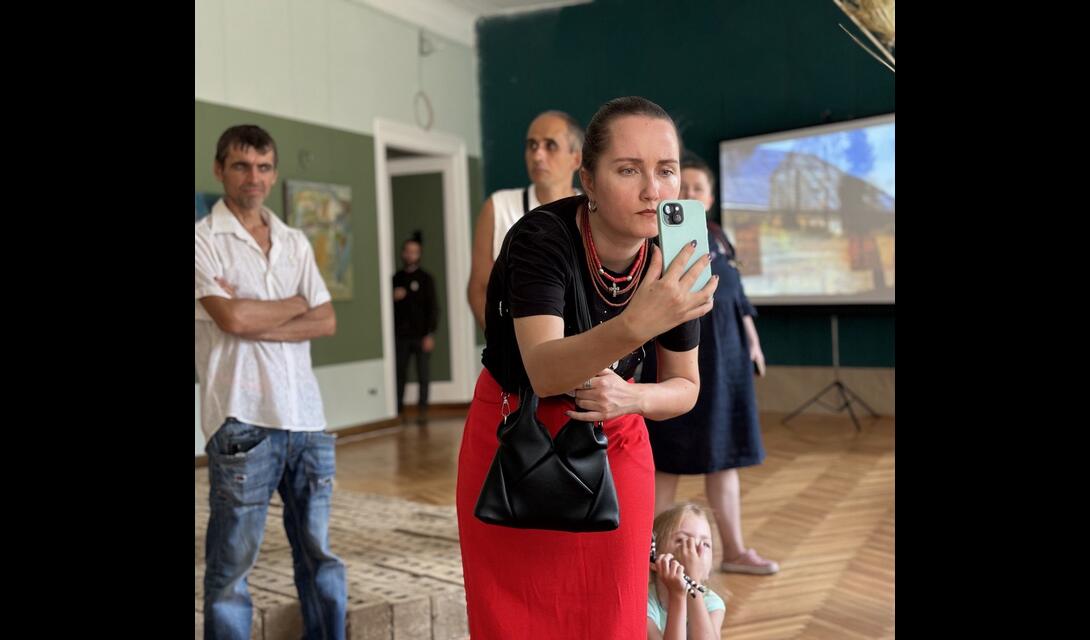KUT 772: Treasures is an architectural and artistic exploration and reflection on the intangible cultural heritage of two communities located 772 km apart. The project aimed to reveal the creative potential often buried under daily routines and overshadowed by the conditions of war. We set ourselves abstract goals: to discover, observe, listen, share experiences, gather impressions, and illuminate these findings through curatorial, artistic, and architectural practices.
The team behind this pilot program of artistic and architectural research residency brought together an interdisciplinary group: a researcher of intangible cultural heritage, a curator of art projects, an architect-urbanist, an artist focused on identity studies, and an artist responding to social and geopolitical challenges through their work.
Contributors to the project included:
Iryna Kats – researcher,
Lucy Nichai – curator,
Roksolana Dudka – artist,
Vartan Markaryan – artist,
Oleksandr Stolovyi – architect-urbanist.
Project Objectives:
To uncover the potential of cultural heritage for identity restoration and sustainable development of small communities through interdisciplinary practices.
Project Goals:
Conduct architectural and artistic research programs in collaboration with the community-building centre “Khata-Mazanka” and the “Nazar Voitovych Art Residency.”
Establish platforms to foster cooperation between communities in the Kharkiv and Ternopil regions.
Create art exhibitions reflecting artists’ reinterpretations of modern media and architects’ exploration of archaic construction traditions and cultural heritage from the Krasnokutsk and Zbarazh communities.
KUT 772 km:
This is the distance between the two primary locations of the project: the community-building centre “Khata-Mazanka” and the “Nazar Voitovych Art Residency.” The word “Kut” (Corner) has historical significance as a toponym in old villages—it referred to the edge of a settlement, often a unit with its own name and a mini-administrative centre. A “Kut” was a meeting point, a crossroads, a boundary between the private and the communal. Our “Kut,” with its seemingly illogical label of 772, emphasizes the importance of thinking beyond the obvious and exploring broader possibilities.
"KUT 772: TREASURES" Exhibition
As a result of the research, an exhibition was held in one of the halls of the Vasyl Krychevskyi Poltava Local History Museum ( Facebook page ). The museum itself became a symbolic addition to the concept of preservation and renewal, as its main building has been closed for renovations since 2021. The museum's incredible walls added a unique atmosphere, while the freedom of the exhibition layout within the hall highlighted the significance of living intangible cultural heritage. The curator of the exhibition is deeply grateful to the museum team and the Department of Culture of the Poltava Regional Military Administration for their collaboration and support in bringing this exhibition to life.
Together with curator Lucy Nichai, artists Roksolana Dudka and Vartan Markaryan, as well as architect and writer Oleksandr Stolovyi, created art objects as a continuation of their research, expressing impressions, concerns, and reflections on the past and the future.
The foundation for these reflections was inspired by the creativity of both local and visiting artists and artisans. The exhibition featured a range of artefacts, providing an evidence base for the context of the Zbarazh and Krasnokutsk communities.
Among the "Treasures" were original artefacts from the families of blacksmiths Myshchenko and beadwork master Halyna Mykhalska, abstract paintings by Serhiy Dekalyuk, and a documentary video by Svitlana Pohasiy capturing a Lemko folk song performed by Viktor Mandziuk.
Additionally, works from the collection of the Nazar Voitovych Art Residency (2017–2022) were exhibited, including pieces by Oleksandra Pavlovska, Roksolana Uhryniuk, TkhT Group, and Volodymyr Shumylo.
The exhibition also included works from the creative circle "Brothers" by Lyuba Popova, Olena Moiseenko, Olena and Anna Spiridonova, Vyacheslav Nikitchenko, and Oleksii Vasyliiev.
The central installation consisted of adobe blocks crafted by Vyacheslav Nikitchenko using his own contemporary technology.
Organizers: NGO Cultural Dialogue in collaboration with NGO Congress of Cultural Activists
The "KUT 772" project is implemented by NGO Cultural Dialogue and co-financed by the ZMINA: Rebuilding program, created with the support of the European Union in Ukraine as part of a special call for proposals to support Ukrainian displaced persons and the Ukrainian cultural and creative sectors, with assistance from IZOLYATSIA. Platform for Cultural Initiatives, Trans Europe Halles, and Malý Berlín.

























